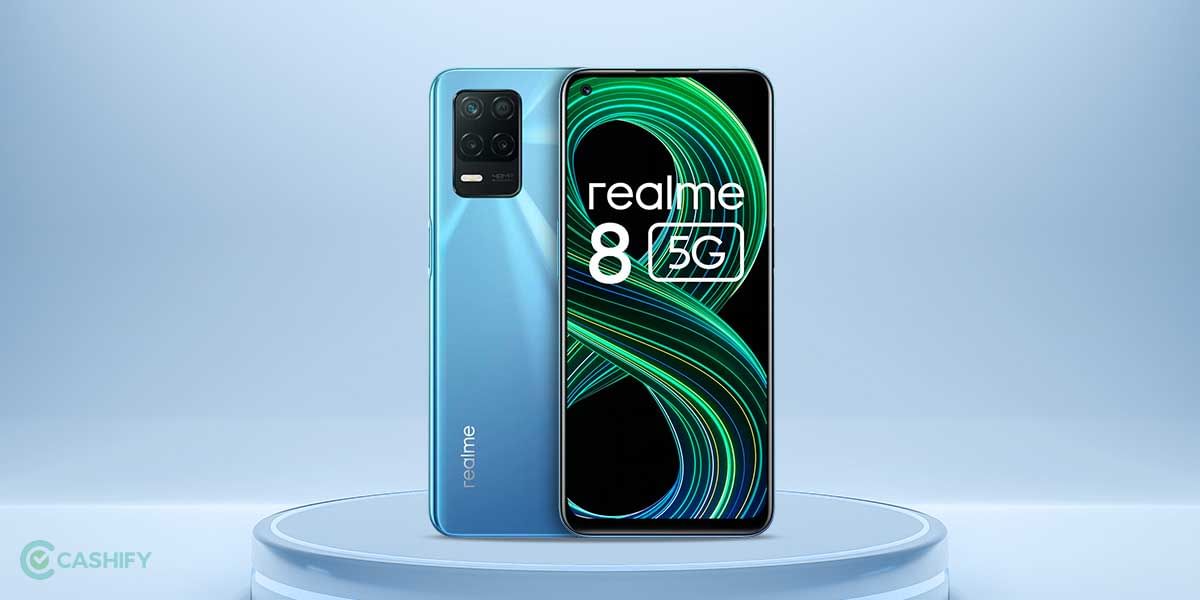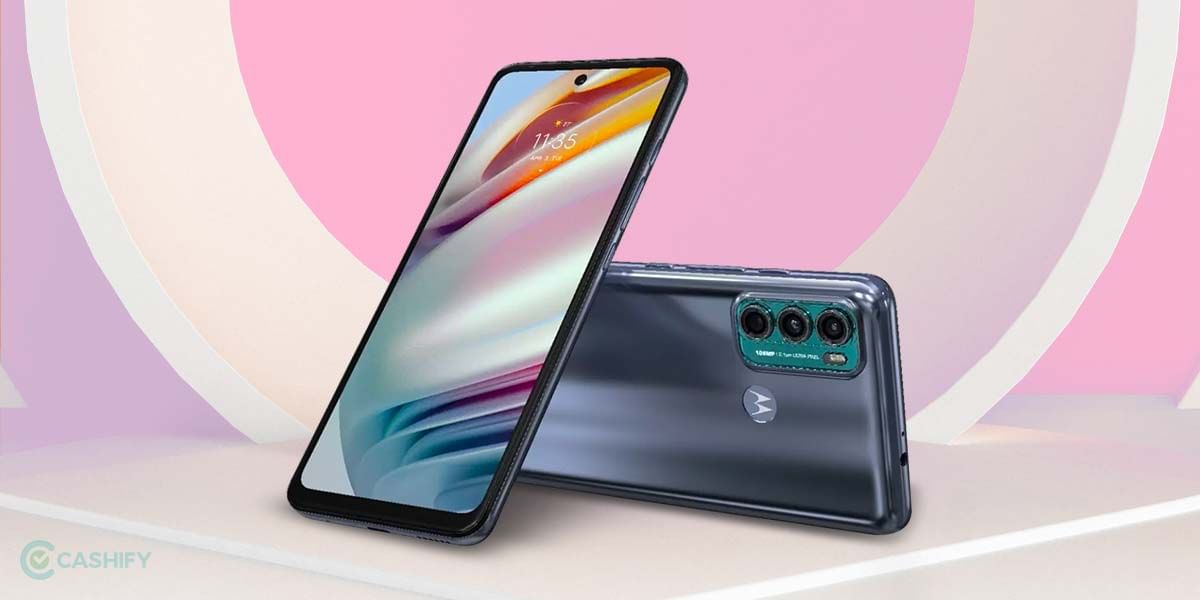Introduction
Xiaomi introduced an extensive Mi 11 lineup with multiple devices ranging from midrange to flagship. Xiaomi Mi 11X is a premium midrange sporting a Snapdragon 870 SoC, a 120Hz Super AMOLED display, and a few more desirable specs up its sleeves. Xiaomi has priced it aggressively against its specifications but is it worth the bucks?
Recycle Your Old Phone, Get Rewarded!
I tried and tested the all-new Xiaomi Mi 11X for some time now and based on the usage, here’s a hands-on review that you must read. You can decide whether to go for it or not after reading it whole.
Prices in India, Variants, Availability
Xiaomi Mi 11X 5G is available in India at Rs 29,999/- for its base 6GB+128GB variant while the higher 8GB+128GB variant is up for sale at Rs 31,999/-. You can choose between Celestial Silver, Lunar White, and Cosmic Black colour variants. As usual, you still get a tonne of deals and discounts such as up to Rs 3,500/- off on HDFC Bank CC and EasyEMI, Mi Smart Band 5 @ 500/- on the Mi India website. Get your hands on Xiaomi Mi 11X on Amazon India as well with tonnes of offers such as No Cost EMI, Exchange offers with up to Rs Rs 16,500/- off on eligible devices.
Box Contents
Xiaomi Mi 11x comes packed in stylish box packaging with a camera printed on it. Inside the box you get:
- Mi 11x 5G device with a screen protector installed
- 33W fast charging adapter
- USB Type C cable
- Transparent Plastic Back Cover
Specs at a glance
Before we talk in detail about the Xiaomi Mi 11x let’s see what the on-paper specs look like?
- Display: 16.9 centimetres (6.67 inches) 120Hz high refresh rate FHD+ AMOLED Dot display
- Processor: Qualcomm Snapdragon 870 5G
- Storage: 6GB/8GB, 128GB
- Software: MIUI 12 based on Android 11
- Rear cameras: 48 MP + 8MP Ultra-wide + 5MP Super macro
- Battery: 4520 mAh, 33W fast charger
- Weight: 196g
- Dimensions: 163.7 x 76.4 x 7.8 mm
Design and Build
At the very first glance, the phone looks better than its predecessor although it follows the same aesthetics as the other Mi 11 series smartphones. A huge build thanks to a 6.67-inch display adds to its ginormous structure although the phone is just 198grams in weight and 7.8mm in thickness subtracting any strain on the wrist which is a good thing. Xiaomi has opted to go all-glass with Corning Gorilla Glass 5 on front and rear that further adds premium-ness to the Mi 11X. Do watch out for smudges on the back as the Black variant is more prone to it.
Although the front selfie shooter is tiny in a punch-hole cutout, Xiaomi has added a silver ring around it which is distractive at least for me and I believe for others as well. It actually makes the cut-out look bigger than it is in some lighting conditions.
Planning to upgrade? Sell Your Old Phone in 60 Seconds From Home
At the back, Mi 11X uses a two-step design for its rectangular camera bump with curved edges. Even with the two-step design involved, the camera bump is surprisingly just a tad bit above the back panel which is something Samsung and a few other brands should learn from Xiaomi. The two giant lenses will surely attract you but how it performs is something I’ll discuss in the “Camera” section.
Talking about the ports and all, you get a nice IR blaster on top with a secondary mic; there’s a power button on the right that doubles as a side-mounted fingerprint scanner, and on top of it lies the volume rocker. At the bottom, you will get a USB-C port, a bottom-firing speaker, and a dual Nano-SIM tray.
Despite getting a Hi-Res audio certification, the phone lacks a 3.5mm headphone jack which is something people would’ve loved on their Mi 11x. In any case, unlike other brands, Xiaomi has a USB Type-C to 3.5mm connector in the box so that’s a relief.
The phone has an IP53 rating against splashes and dust and to be honest, I don’t mind an IP53 rating against not having any official rating as well.
Display
Talking about the specs, you get a 6.67-inch Super AMOLED E4 120Hz display with 1080×2400 pixels resolution and a 395 PPI density. The display has a 20:9 aspect ratio and comes with HDR10+ certification. It has been rated to produce 1300 nits of peak brightness by the Chinese giant. Now that’s about the specifics available on the internet. Now, let’s see how the phone performs in real situations which is ultimately what matters.
First up, you will be overwhelmed with the enormity of the display and that’s the first USP. The phone is using an E4 AMOLED panel which is in rage on midrange devices and Mi 11X is now different. The punch-hole camera on the top is tiny although the silver ring around the edges might distract you.
The display coupled with a colour tuning engine makes the screen colours pop up and adjusts it as per the surrounding for a better experience. The display is vivid and binge-watching on the device is something I could do for ages. The colour reproduction on Mi 11X does tend to bend towards a saturated output just like the Xiaomi Redmi Note 10 Pro although it is negligible.
The 120Hz refresh rate is the cherry on top making your experience a delight. You can still set it to standard 60Hz or go for the full-fledged 120Hz refresh rate. But hey, remember that some apps/UI elements are locked at a lower refresh rate so you will see a slight if not more transition. Xiaomi has rated the display to produce 1300 nits which would have made the display a delight to watch even in broad daylight. Although the display is still bright, it doesn’t reach the aforementioned numbers.
It would have been nicer if the display reached such a figure but hey, let’s give it a pass as it is a midrange.
Performance
Under the hood, the Xiaomi Mi 11X sports a Qualcomm Snapdragon 870 5G chipset manufactured on a 7nm node. The chipset has a tri-cluster arrangement with 1×3.2GHz Kryo 585 plus 3×2.42GHz Kryo 585 plus 4×1.80GHz Kryo 585. It is accompanied by an Adreno 650 GPU with 6GB/8GB of LPDDR5 RAM options and 128GB of UFS 3.1 storage. Now that’s all about specifications on paper, now let’s see how the phone performs after I tested it for a while.
Looking Best Phone Under 20000? Check Out Redmi Note 10 Pro Max Quick Review in 2 Minutes
Two words that I’ll use to describe Mi 11X in terms of performance – flagship killer. The processor is an overclocked version of Snapdragon 865+ and that should give you a clear idea of just how powerful it is. Opening too many apps at once or toggling between a series of them, Mi 11X would do it without a hitch. Animations and transitions are buttery smooth also because the display renders a 120Hz refresh rate so using the phone is a delight.
I play a lot of games and trust me, Mi 11X can handle it all although games are usually locked at 60Hz while only a few titles can render at 60Hz or more, but that’s universally known and not something Mi 11X has issues with. I usually prefer Snapdragon processors over any other processor unless it’s an Apple A-series bionic chipsets. Realme X7 Pro arrives with Dimensity 1000+ SoC and even though it is a powerful processor, it lags behind SD870 5G.
Additionally, if you are playing games, you can very well use the highest settings available since the processor can take it all. Be it Call of Duty Mobile, PUBG Mobile, Genshin Impact, Garena FreeFire, or any other graphics-intensive games without causing any frame drops even after playing it for 35 to 45 minutes at a stretch.
Cameras
Xiaomi Mi 11X uses a triple camera setup. This includes a 48MP primary snapper with f/1.8 aperture, PDAF, and 0.8micrometer pixel size; an 8MP ultrawide snapper with f/2.2 and 119-degree field of view; and a tertiary 5MP macro sensor with f/2.4 aperture, a focal length of 50mm and 1.12micrometer pixel size. The front camera, on the other hand, uses a 20MP sensor with f/2.5 aperture and 0.8micrometer pixel size.
The rear camera setup can record videos at 4K@30gps while you can go as much as 960fps at 1080p. On the other hand, the front camera is capable of 1080p@30fps and 720p@120fps only.
The daylight shots on Xiaomi Mi 11X are overall average with a lack of details if you crop those images. Noise is abundant in the snaps, especially when capturing objects with shadows or darker parts in the frame. The shots face highlight clipping issues when subjected to complex shots like a tree. The dynamic range isn’t good either and overall, the camera leaves with a desire for more which is a setback for a phone that has consistently proven its mettle in all the tests I conducted be it regarding the performance or the audio quality and so on.
The software tends to prefer warm colours when the AI is turned off. However, don’t get discouraged just yet because the cameras mounted on Mi 11X are at least better than Xiaomi’s many offerings in the budget category.
Moving on, we have an 8MP ultrawide snapper that lets you fit in more people or more surroundings when you grab a shot. I was able to capture wide-angle shots without much edge distortion which is great. In fact, I didn’t see any distortion at all so let me know if you notice it.
Finally, the tertiary camera setup is the 5MP macro sensor which turns out to be instrumental in keeping the camera rig’s reputation intact. I was surprised with the quality of macro shots with good autofocus and the ability to take 2x zoomed shots without turning the photo into a 1990s grainy overlay effect.
Moving on, we have a 20MP selfie shooter. It may not be the best but it is good, to be honest. It managed to retain details as well as keep the colours as natural as possible. You can turn on the Beauty mode to get wrinkles, blemish-free selfies although I wouldn’t stress that enough that these selfies look too soft and made-up. The selfie shooter is capable of clicking quality images that blow out any odds.
Battery
Tagging under the hood is a modest 4,520 mAh battery which is powerful. I was able to go through the day with hours of browsing on the internet, social media, video streaming, and more with some juice left at the end of the day. I don’t have any complaints regarding the battery size as it is modest but could have been slightly bigger.
The device is supplied with a 33W charging brick that takes around an hour to juice up the battery. The only thing to remember here is that the phone becomes hot during a charging session. Although the heat dissipates as soon as you unplug the charger and give the phone a rest, it is a concern.
Frustrated with a draining battery? Affordable Mobile Battery Replacement at Doorstep
Audio, Connectivity, Biometrics
Xiaomi Mi 11X sports a stereo speaker setup which is way better than having a single speaker setup. There’s a bottom-firing speaker that acts as a right channel while the secondary loudspeaker on the forehead acts as a left channel. It is quite loud in terms of output and the sound emanating from both the speakers is quite well-balanced although lacks bass and depth. But the sound doesn’t distort when yanking up the volume so that’s a relief. Plus, it has Dolby Atmos, Hi-Res audio support, and a few other features that make its speaker setup more pleasing.
When it comes to the connectivity features, there are a ton. You get dual-band Wi-Fi 6 support along with Bluetooth v5.1 with LE and A2DP, GPS support that includes systems like BDS, NavIC, A-GPS, and Glonass. There’s an IR blaster on top, a USB Type-C 2.0 port at the bottom and that’s about it.
I tested the various security features on-board Xiaomi Mi 11X. It includes a side-mounted fingerprint scanner which is reliable and unlocks the phone faster. Apparently, its placement on the power button makes it convenient to unlock the phone compared to the facial recognition system as you will have to tap on the power button to use the latter anyways. The face unlocks works quickly too although it is comparatively less secure than the fingerprint scanner. You can still use PIN and pattern mechanisms as well.
Pros & Cons
Pros
- 120Hz of refresh rate display
- Samsung E4 Light-emitting material
- SGS Eye Care and HDR10+
- Snapdragon 870 chipset
- Liquid cooling technology 1.0
- X55 Modem for lightning-fast 5G connectivity
- 48MP triple-rear camera setup
Cons
- No 3.5 mm headphone jack
- Hybrid SIM slot
- No Dust and waterproofing
- No wireless charging
Xiaomi Mi 11X will surely turn heads with its arsenal of specifications that are available on many flagship devices. Be it the Snapdragon 870 5G chipset or the gorgeous display, the device is bliss to use but with some caveats. Debuted at Rs 30,000/-, the flagship killer is priced at a much competitive price tag compared to its rivals and there are many if you want to look out for.
Mi 11X is titled towards performance and that makes its performance a beast. No doubt it is multi-purpose as you can take great shots with its cameras although not like a flagship phone, you can enjoy an IP53 rating which is better than not having it. The software is something I would have loved to change as MIUI does bring a lot of spam notifications, bloatware and comes with a sprinkle of ads here and there. Not to forget that the phone gets hot during charging.
With that being said, I hope reading this hands-on review on Xiaomi Mi 11X did make you aware of the pros and cons. This will help you ascertain whether to go for it or not.






























